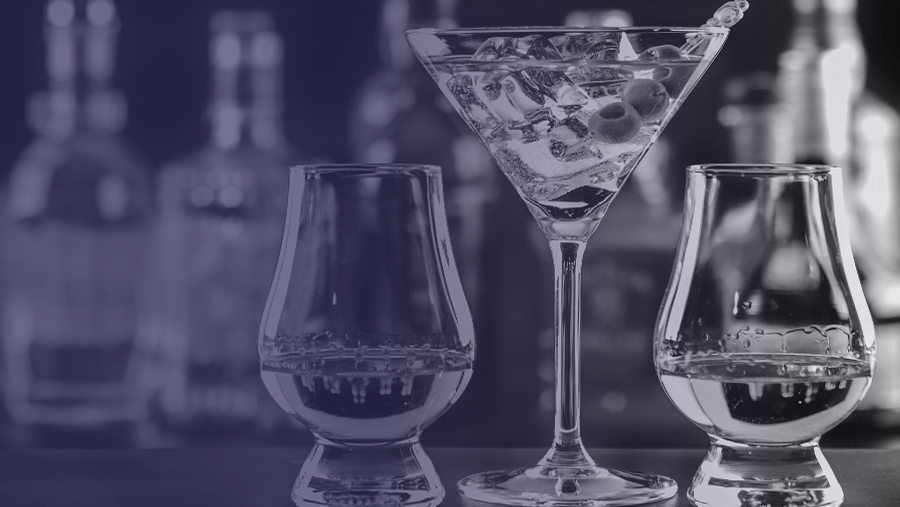RTD’s are currently enjoying soaring success in numerous global markets, especially the category’s largest, the US and Japan, and across ever widening demographics, showing that the work of producers to markedly change the category’s image is paying off.

Low calorie and low ABV offerings, a focus on natural ingredients, the rise of the canned format, ever more sophisticated flavours, and Instagram-friendly brand identities have helped RTDs not only fit into consumers’ ever more health-focused lifestyles, but in many cases, made them aspirational too.
RTDs first enjoyed notable success in the 1990s and early 2000s, offering approachable – but often highly sweetened – flavours to consumers who saw traditional spirits and mixers as unapproachable. Marketed as suitable for up-tempo nights out, advertising focused on cheeky, ‘lad’ focused campaigns such as WKD’s long-running ‘Have you got a WKD side?’ series.
However, their revival has seen them by turns positioned as better-for-you, craft, super premium, and offering a sophisticated array of flavour profiles. Consumers are seeking convenience, sure. But with both the on and off-premise now offering premium spirits brands, and a vast range of mixers with nuanced and niche flavours, RTDs have had to match and outdo the quality and choice on offer elsewhere. Imbibers continue to seek complex serves – and ever healthier serves – even from convenient options.
But as the category widens and develops, there are a number of new, and in some cases, divergent trends emerging. Here we explore some of them:
Hard Seltzers
Seltzers have been vital to the boom in RTD sales in the US in recent years, due mainly to their real or perceived, ‘lighter’ credentials. They’re seen as a lighter alternative to beer in particular. Speaking on the recent launch of its 6% ABV, Natural Light Seltzer, Ricardo Marques, Group VP of Core & Value Brands at Anheuser-Busch, said: “The seltzer category is booming. It’s part of a larger shift in consumption across America, and we believe it has tremendous staying power.”
[Seltzers are] seen as a lighter alternative to beer in particular.
Low-strength variants have proved popular too. In May, the pH Experiment, a growth unit within Craft Brew Alliance, launched its 2% ABV Pacer Low Proof Seltzer as a test product to the US market. The range contains less than 50 calories per can. On its release Karmen Olson (GM at pH Experiment) said: “We heard from many drinkers who said they wanted something that would help them pace themselves to stay in control. With seltzers growing triple digits, but available only in non-alcohol or 5% ABV, we saw an opportunity to create a low-proof offering.”
However, it appears there is another gap in the market, one that runs counter to many of the trends we are now seeing in the category: high strength seltzers are now emerging as a new sub-category, with notable releases in announced from both Pabst and Four Loko of 8% and 14% ABV respectively.
Craft Spirit Branded RTDs Continue
While established brands have been developing RTD versions of their spirit lines, one of the most notable shifts towards premiumisation is the entry of the craft brands into the space. Craft distilleries are launching spirit-based RTDs made with their own signature gin or vodka, often with the addition of localised ingredients or botanicals, creating more herbaceous and complex pre-mixed options. These releases tap into a wider trend of twists on classic serves with unusual or exotic ingredients.
RTD Hard Tea
Traditionally, hard coffee has catered to consumers looking for convenient alternatives to popular cocktails such as the Espresso Martini, as well as those looking for caffeine-enhanced beverages that offer an additional buzz. The emergence of the hard tea category, however, taps into a more health-conscious need state: a number of health-boosting ingredients such as turmeric, ginger, and berry botanicals are being added to tea to offer a well-being halo to consumers. Though alcoholic drinks cannot market themselves as ‘healthy’, these products benefit from their association with health-giving ingredients.
Alternative Alcohol Bases
Consumer aversion to wheat, barley and gluten has motivated producers to look for alternative alcohol sources, and in some cases, move away from malt entirely. Fermented cane sugar is fulfilling this niche for many products, offering a gluten-free base for their RTDs. However, some brands are looking further afield for their base alcohol.
One brand pioneering this area is Crook & Marker, launched by the founder of Bai Antioxidant Beverages. Made with ‘organic BaseBrew alcohol’ brewed from cassava root and ancient grains including quinoa, amaranth and millet, the better-for-you spiked seltzer claims to be grain-to-glass. The eight-strong range includes Black Cherry, Tangerine, Strawberry Lemon, and Grapefruit. All are zero sugar and less than 1g of carbs per can, use natural-sweeteners, and are naturally gluten-free and vegan-friendly.
Though alcoholic drinks cannot market themselves as ‘healthy’, these products benefit from their association with health-giving ingredients.
Slick Packaging
The visual nature of social media is having a marked impact on packaging across all categories. Just look to the striking minimalism of German brewer And Union’s packaging for its Unfiltered Lager for proof. The matte, plain white can features only the words ‘Unfiltered Lager’ in black print.
However, bright, eye-catching colours, simple designs and slender cans are particularly prevalent in the RTD category. This stylish but approachable aesthetic keeps canned RTDs accessible while also making them appear more premium than soda or beer products.
Due to the portable nature of the category, Instagram-friendly design is key. Canned and bottled formats allow consumers to drink complex cocktails at the beach or at festivals with minimal fuss, meaning that if drinks makers get the design of their brands right, they’re much more likely to be photographed by consumers in aspirational and brand-aligned settings. In 2019, consumption is endorsement, especially among millennial consumers who document and share their cultivated lifestyles and the aesthetically pleasing products that align with them.
Key Takeouts
- From handcrafted ingredients and homemade spirits to an interest in provenance, RTDs are increasingly premiumising.
- Consumers are seeking complex serves, even from convenient options, be it from rare or localised botanicals to unique or craft twists on classic cocktails.
- Consumers more aware of what they are putting into their bodies than ever before. RTD’s have become lighter, lower in carbs and lower in alcohol in-keeping with the overall health and wellness trend. The appeal of RTDs in this respect is drawing a number of brewers to enter the RTD market, as consumers change habits and seek out products that seem to offer moderation.
- The moderation and health megatrends are seeing products look to health-giving ingredients, or alternative alcohol bases, to enjoy the positive effects of this ‘health halo’. Better-for-you drinks will dominate future NPD.
- The diversification of the RTD market is also bringing with it counter trends, as consumers seek out serves that speak specifically to them and their lifestyle. While seltzers have driven RTD sales in the US, due mainly to their ‘lighter’ credentials, a number of over-strength alternatives have recently entered the market.
- While accessibility remains important for RTDs, visual identity is key. Bright, eye-catching colours, simple designs and slender cans fit neatly into the curated and perfectly filtered aesthetic that social media influencers and celebrities are promoting. Brands that get it right can expect social media promotion by consumers.
You may also be interested in reading:
Provenance and profits: The future of the gin industry
Spirits Forecasted to Lead ‘Share of Servings’ by 2030 in the US
To stay ahead of market trends and analysis, subscribe to receive our Industry Insights directly to your inbox.
Category
Market
- Beer
- Brandy
- Cider
- Gin
- Irish Whiskey
- Low-/No-Alcohol
- Mixed Drinks
- RTDs
- Rum
- Scotch
- Spirits
- Tequila
- US Whiskey
- Vodka
- Whisky
- Wine






